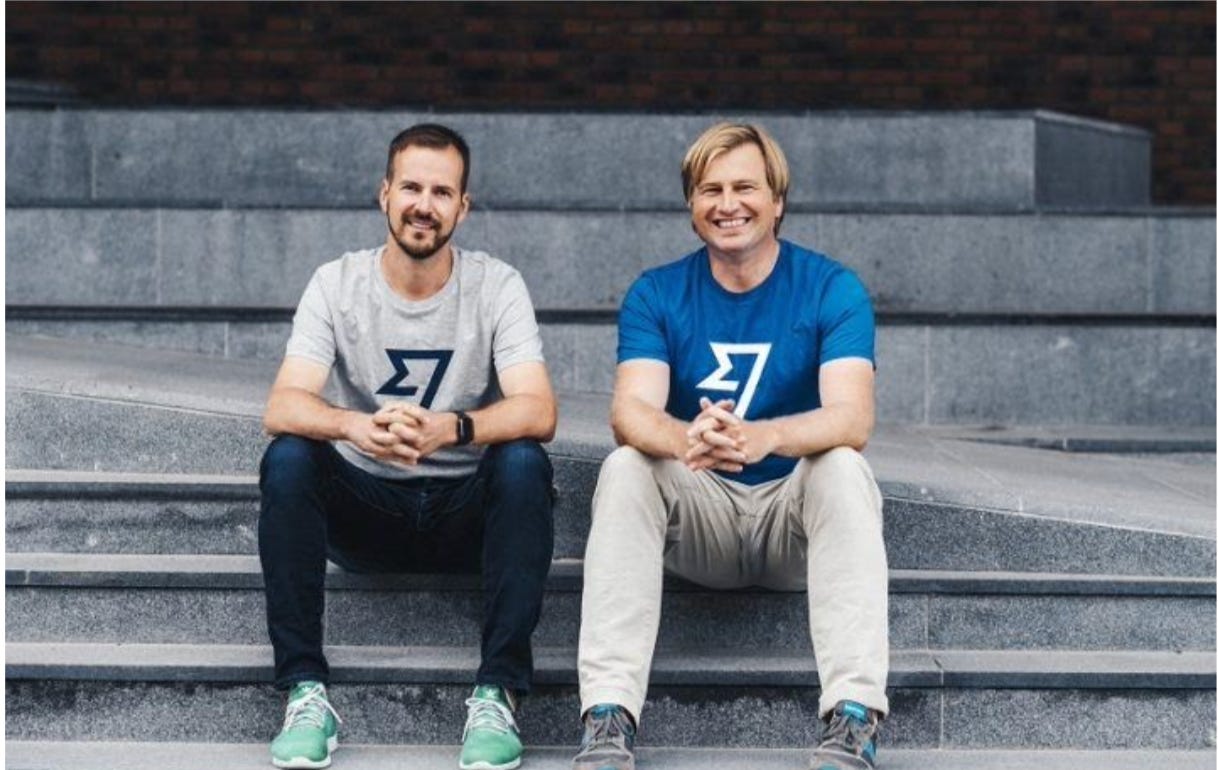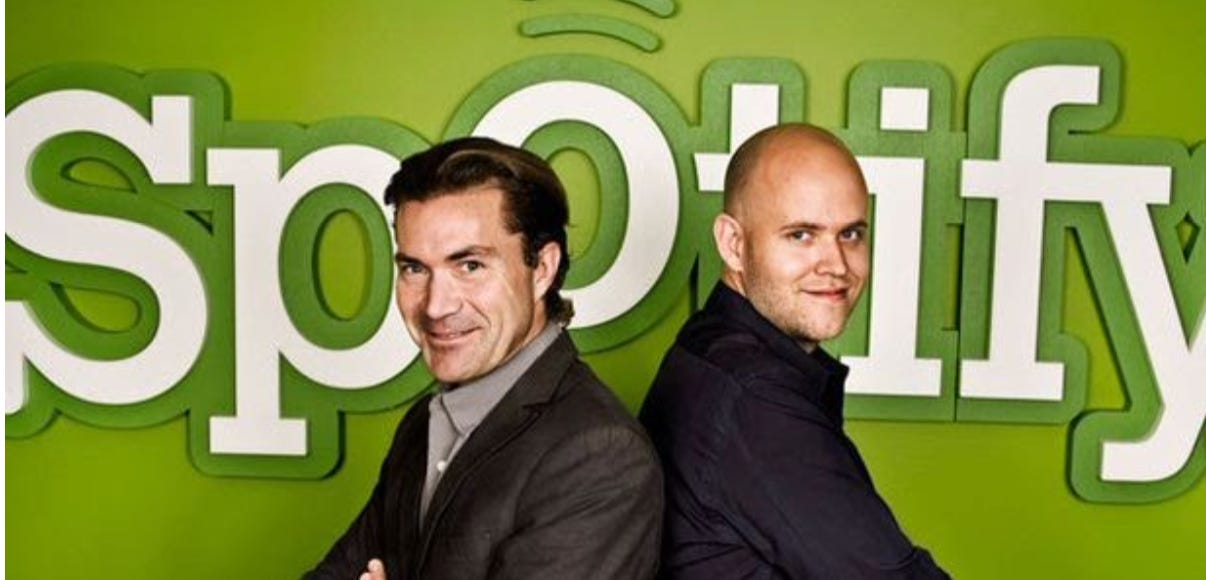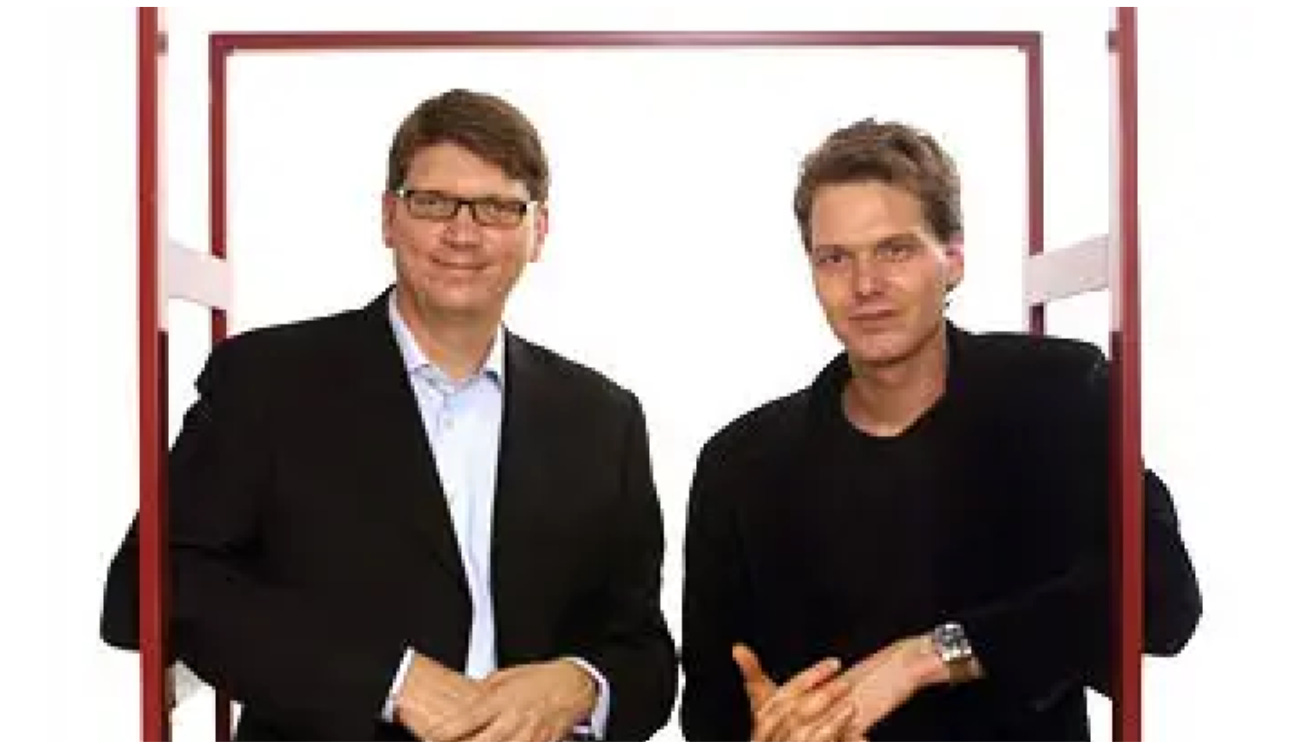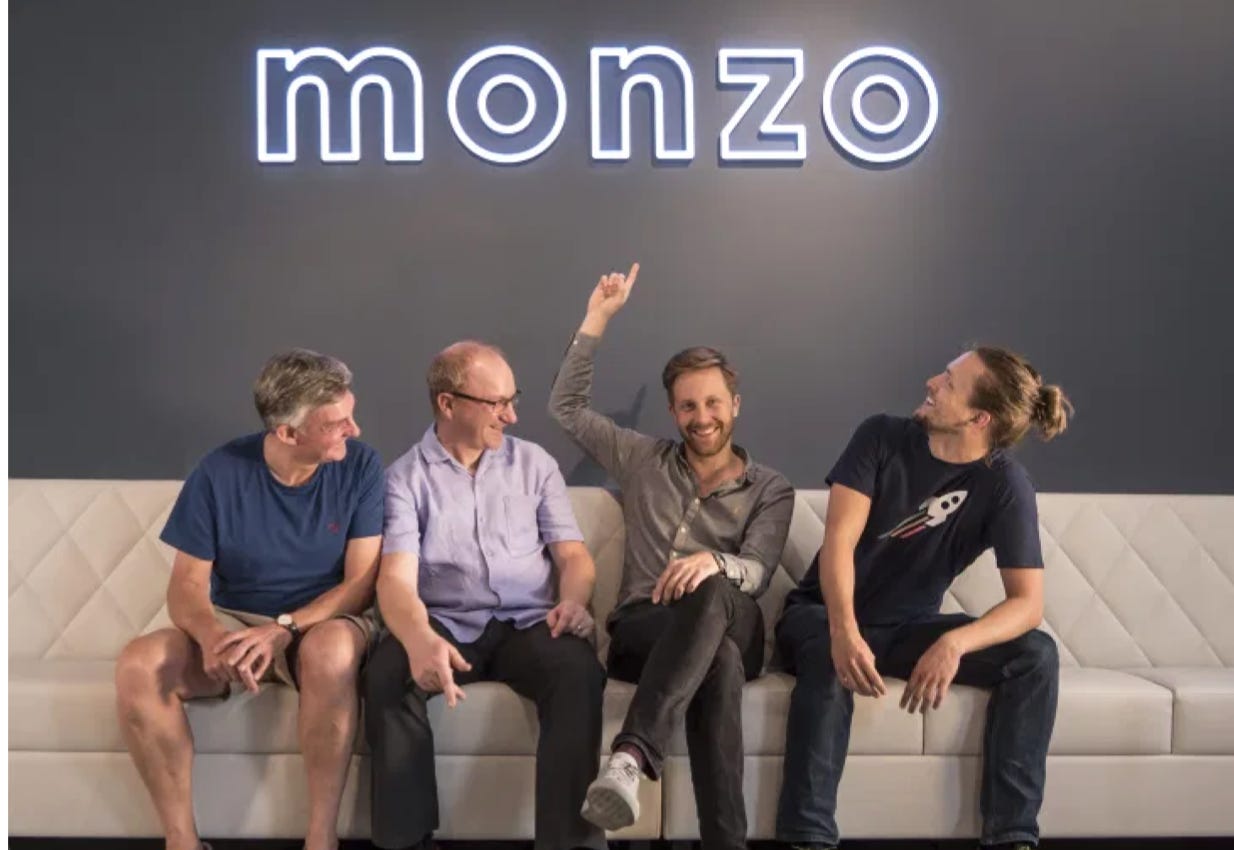[Europe Edition] Monzo, Transferwise, Skype & Spotify
Hello folks 👋,
For those of you who have been here a while, you already know that a couple of months back I started my writing fellowship at On Deck. Last week was a bittersweet moment when ODW3 officially came to an end. Today together with Gonz Sanchez, head of growth at On Deck, we’re diving deep into the european scene in the first ever Seedtable x First 1000 Collaboration.
In the past 6 months alone, there countless unicorns and a bunch of significant exits including Arrival, Darktrace, Deliveroo (that one was a bummer 😬 ) and UiPath. While their US three comma club counterparts have enjoyed fanfare and coverage across the globe, European unicorns have failed to garner the amount of global attention they deserve.
Building a global first company has always been a feature not a bug for many of the startups that originated outside the confines of Silicon Valley and the US startup hubs in general (NYC, Austin and more recently Miami).
But the fact that European unicorns have not received their rightful attention by the media doesn’t mean their stories are not worth telling. If anything, the origin story of some of the top European startups, the methods through which they got their very first customers, are a lesson for all soon-to-be founders and startup enthusiasts out there.
Which is why in this Seedtable x First 1000 collaboration we’ll dive deep into how some of your favorite European startups got their very first customers.
To kick things off, let’s jump into Transferwise.
Transferwise (now Wise)
Transferwise’s very first customer was… its founder: Taavet Hinrikus. Taavet, originally from Estonia, moved to London in 2007 and quickly realised he had a problem: he had to consistently send money back to his Estonian savings account to manage his Mortgage payments and stock portfolio, which meant that every month 5-6% of his hard earned money would evaporate in the form of banking fees for moving money from Pounds to Euros..
A few months into this shenanigan, Taavet met Kristo Käärmann, a fellow Estionian who had the opposite problem: his salary was in Euros but he was living in London so he needed pounds. Taavet and Kristen decided to team up and cut the middle man (banks). Taavet would send Pounds to Kristen's UK bank account, then Kristen would send the equivalent amount from his Estonian (Euros) bank account to Taavet's. This way the duo saved up on the 5-6% fees because the money never crossed borders and both got their money instantly. Pretty neat, right?
The system they set up worked for two people, sure, but the duo did not have enough conviction that it could turn into something the masses would use. So they decided to hire a freelance engineer to build the anMVP. They did not have any financial infrastructure in place, rather the idea was to create a marketplace where people who have opposite conversion needs could match up, and do the same that Taavet and Kristen did. For security purposes, instead of sending the money directly in a P2P fashion, the money went through Taavets and Kristen's accounts and they sent it from there. This way Transferwise was able to take on the role of the middle man, the role the banks played, without having any liquidity or regulatory requirements… since all the transactions were peer to peer and never crossed borders. Transferwise would charge 0.5%-1%, which is X5-X10 cheaper than a typical bank.
To kickstart this marketplace of currency conversion, and get their first 100s of users, Transferwise went the PR route. A cold email to Techcrunch got them featured and the ball started to roll. From there, because of the tiny margin they made on each transaction, they relied exclusively on that initial Techcrunch-generated customer base to spread the word to hit that 1000 customers mark. The lesson here? Getting someone else to tell your story is one of the most underestimated growth tactics out there—it establishes a level of trust and authenticity that is very hard for the founder to create.
"We tried a few “growth hacks” to get things going — e.g. going to universities with high proportions of foreign students and giving them referral bonuses if they invited their friends; hitting HR directors of businesses that paid people in Euros and telling them they could give their employees a pay raise by paying with TransferWise. We realized these hacks only worked when the person who was hustling on our behalf was an existing customer."
Spotify
While Transferwise tapped into their customers, Spotify tapped into an existing customer behavior: listening to music online.
Listening to music online was prevalent in the late 2000’s, but paying for it was not. Millions of dollars were lost every year due to this sudden outburst of free-to-play (pirated) music. This was the problem Spotify founders Daniel Ek and (what’s the other guy’s name?) set out to fix.
How?
They honed in on one key differentiator that, they suspected, would be strong enough to warrant people to give up some of their hard earned money: speed. Spotify doubled/tripled/quadrupled down on speed to win early customers.
The human brain conceives anything that happens in less than 200ms as “instant”, and Daniel wanted nothing short of that. This was back in 2008: the first iPhone had just been introduced a few years back, internet broadband speed was a tenth of what it is today.
The Spotify team set out to work. Yet despite the thousands of engineering hours and 2 years of effort that went into achieving the 200ms goal, the best the engineering team at Spotify could do was 500ms. So instead of trying to lower that number further, the team decided to spend a ludicrous amount of time creating the illusion of that “instant” magical feel; They made the throttle (the bar showing progress on the song) start immediately upon play rather than show a loading icon; They set things up so users would download only the first 15 seconds from the internet—the rest would be complemented using p2p sharing between Spotify users that lived near each other, and who had already loaded the selected song. Spoiler alert: it worked.
And that’s it for the technical infrastructure. But what about the music itself?
Ek and his team spent 3 years negotiating with Label partners. Finally, they struck a deal: in exchange for guaranteeing 1 year revenue (i.e Spotify guaranteed to pay them an agreed upon minimum amount of money regardless of how much money Spotify made), Spotify would get access entirety of these label’s music catalogues, which they could use in their test market Sweden (where music label revenues had a decline of over 80% throughout the prior few years).
To meet those onerous commitments, Spotify had to go big from the get go and optimize for revenue from the very early days. They came up with a neat Go To Market strategy that went something like this:
For their hardcore fans: they would debut the premium service a few weeks/months prior to introducing their free version. This way anyone who really wanted access to the service before it's available to everyone could pay (and they did). Thus capturing as much revenue as possible
For the general public: they introduced a free version, but it was invite-only. Each new member was given five invitations that they could use to invite their friends, no less no more; making having a Spotify invite a valuable currency and a status symbol within the tech community
To seed each new market, they gave the first batch of invites to bloggers and notable techies. In the US for instance, Spotify also partnered with Klout, a service that measures online influence, to give out 15,000 to 20,000 invites. This way, as soon as Spotify launched in any new market, and as soon as any blogger wrote about them, they would get bombarded with people asking for invites (and engaging with their content). So they wrote more about the company, and the more they wrote the more people engaged….you know how the flywheel goes.
Skype
Skype, the godparent of European tech companies, was launched in 2003—but the idea dates back to 1998. Niklas, one of the cofounders, was working at Tele2 during that period, a telecommunications operator based in Stockholm. He presented the idea of "internet telephony" to the execs… here is how his manager describes the experience:
Jan Stenbeck (owner MTG/Tele2) had lots of ideas around VOIP, and we launched many projects around the Internet and VOIP. But at that time broadband was limited, so there was not much interest from consumers, and we had enough to do to launch fixed telephony services based on S7 and get the infrastructure in place. I guess that Niklas just gave up and started his own business together with Janus Friis, who also worked in the Danish operation 1996-1998.
Niklas remained obsessed with the internet and the concept of Peer to Peer sharing. So he teamed up with Janus to start Kazaa.
Kazaa was a service similar to Napster or Limewire, yet even more successful. In fact, at one point in time, Kazaa was one of the most popular applications on the planet. Kazaa users could pirate music, videos, books… etc by downloading bits and pieces from a large group of online users. After the explosion of Kazaa (and the fear of being arrested for developing pirating software), the duo started brainstorming other use cases for the peer to peer technology they created. Enter Skype.
Skype went from 0 to 100,000 in just one month. They did that by leaning heavily onto the social capital generated from being the creators of Kazaa.
Kat James, former head of PR at Skype, describes the company’s initial PR strategy thus:
In the early stages, it was important to get the business community interested in Skype and to understand the implications of this new technology for consumers. So initially we targeted business, investor and technology media, then moved to target more consumer read publications such as the consumer read PC publications. We quickly followed to focus more on mainstream consumer press, particularly the lifestyle and trendsetting media.
The case for the viral loop of Skype is pretty strong: you call someone, they are wowed...they use Skype to call other people, they are wowed, and so on and so forth). But what accelerated adoption, especially in the early days, were two key decisions. First was "building for soccer moms' —this was the number 1 core value for the product. The idea behind it was that, back in 2003, not that many soccer moms were online, which meant setting up that initial constraint allowed the team to push themselves into obsessing over the ease of the product. Unlike many companies they did not focus on "early adopters" but rather the general mass from the get go. The second key decision the Skype team made that led to their success? Skype was free to use. People like free stuff.
Monzo
Monzo is one of the most beloved fintech’s in the planet. They are one of those companies with a cult-like following… and with good reason. In 2016, just a year after their initial launch, Monzo set the record for "quickest crowdfunding campaign in history" when it raised £1m in 96 seconds. For the uninitiated, Monzo is a neobank based out of the UK. The idea behind it? To build an internet-first bank that people would actually like.
Monzo took Reed Hoffman’s advice “If you are not embarrassed by the first version of your product, you've launched too late” too deeply, some would say. When Monzo launched, they did not even have cards—the product was just an API for developers to play around with. Can you imagine Tesla launching to sell tyres before they got the car ready? or Apple selling iPhone cases before the iPhone was ready? Monzo did.
To add to the unorthodoxy of their methods, Monzo acquired their first customers through Hackathons. They would *only* give out demo cards to participants in the hackathons. As the company gained popularity they had a waiting list where they could tap into for the next hackathon. What’s interesting is that this scarcity induced FOMO was not a choice, but a constraint (since the cards were prepaid, Monzo needed to have the money upfront). They started off with 15 demo cards, moved 50 in the next hackathon, then 100 and so on and so forth.
Two of the biggest hurdles any startup founder—specifically a fintech founder—has to overcome are value and trust. How do you get people to trust you with their money? How do you demonstrate your value proposition and differentiation in the blackhole of financial products? The hackathon killed those two birds with one stone. Instead of having people's attention for the 7 seconds they spend on your page, you got them for 24 hours, and getting to know the real people behind the company is one of the fastest ways to develop trust.
The cherry on top was it is much easier to rally people behind a Hackathon than it is around the product/mission/vision of your company. We, as humans, like the familiar. And we also like fun. Hackathons are fun.
Wrapping up
The common thread between all those companies? Constraints. Restriction and constraint breed resilience. Transferwise was restricted by the amount of liquidity they had in the marketplace, Spotify constrained by the revenue commitments they had to meet, Monzo by the number of prepaid cards they could issue and Skype by the infrastructure it had to support calls. Another thread common to these companies is that they all built their very first MVP with a much broader audience in mind than their initial early adopters. Skype product philosophy was to be built for soccer moms, Transferwise was a global peer to peer exchange from day 1 and Spotify did not burn billions of dollars before turning on the monetization machine as is the case with many consumer apps. But these are just four examples of fascinating origin stories for fascinating European startups. There are many, many more out there. It has, we believe, never been a more exciting time to build a startup in Europe.
What the First 1000 community is working on ?
Minevera : Digitizing the tribal knowledge of advanced 3D printing technology into a single education platform. (Help them get a $10k by voting here)
Deepword : Create videos of people talking without having to film them, at scale with DeepWord
Volu: the world's first app that allows you to capture, play with and share volograms (videos of you or a friend, but in full 3D!) with friends and followers.
Big News: Weekly Commentary on all things from India about Running Platform Marketing




